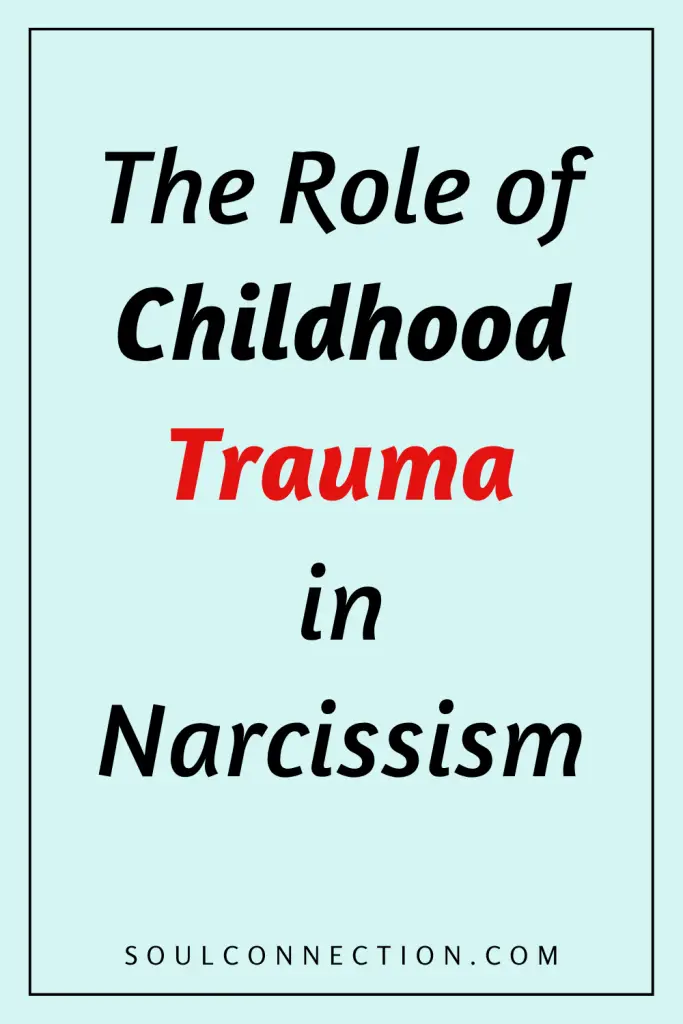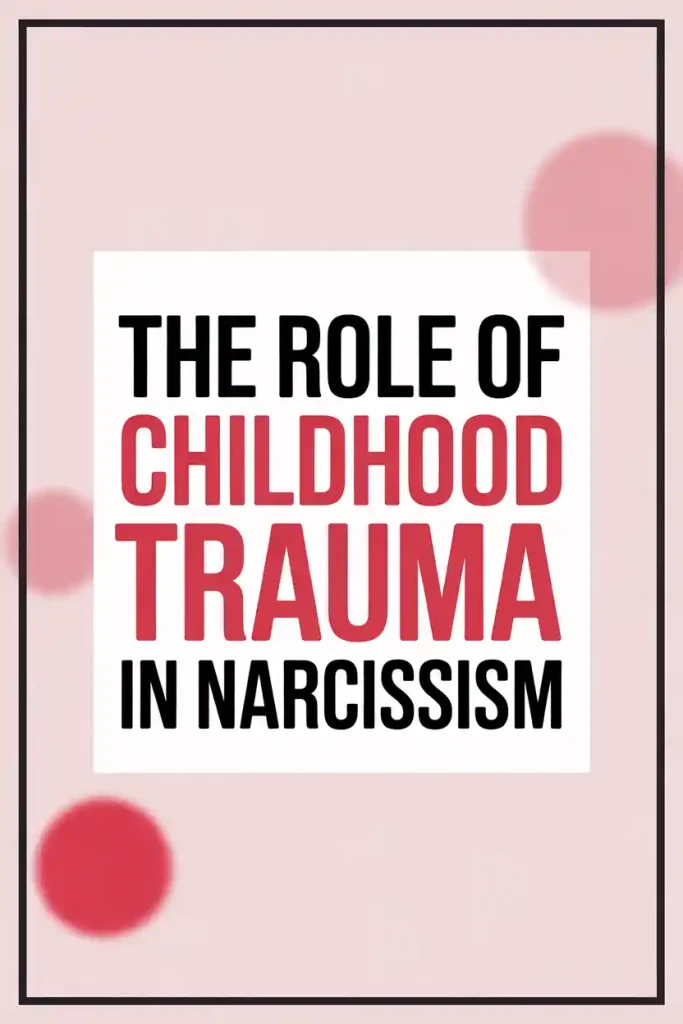Why do some people seem utterly allergic to accountability? Why can’t they say sorry unless it’s followed by “you made me”?
Narcissism has a way of turning relationships into emotional obstacle courses, and many of us have stubbed our toes on its sharp corners.
But where does this prickly personality trait come from? Blame genetics if you like, but childhood trauma sits at the center of the conspiracy.
Unpacking the role of childhood trauma in narcissism is like solving a mystery with a very unreliable narrator. Welcome to the detective club.
What Childhood Trauma Can Look Like
Sometimes trauma is big, bold, and easy to spot: abuse, neglect, or loss. Sometimes it’s quiet: the emotional chill in a home where love is conditional, praise is rare, or parents are too wrapped up in their problems to see you.
Even the most “normal” families can cook up subtle wounds that quietly shape a child’s sense of self—like being valued only for achievements, or feeling invisible.
Trauma isn’t just what happens; it’s also what’s missing. Secure attachment, consistent care, a sense of safety—all the ingredients for healthy self-esteem—can be in short supply.
When a child’s needs go unmet, protection mechanisms start to build, brick by emotional brick.
How Narcissism Develops as a Coping Strategy
Many narcissists didn’t wake up one morning and decide to be the main character in everyone’s life. They learned, early and often, that vulnerability was dangerous or pointless.
Maybe their parents punished “weakness” or ignored feelings altogether. Maybe love was earned, not given. To survive, some kids build an alternate self: shinier, grander, and untouchable.
This false self becomes armor. Instead of “I am lovable as I am,” the story becomes “If I’m the smartest, best-looking, or most successful, I’ll finally be safe.”
Trouble is, underneath all that bravado sits a mountain of shame, and nothing ever fully fills the hole.
Attachment Styles and Their Sneaky Influence
Attachment theory, courtesy of psychologists like John Bowlby and Mary Ainsworth, helps us see how early relationships lay down blueprints for adult intimacy.
Children who grow up with chaotic or dismissive caregivers often develop insecure attachment styles: anxious, avoidant, or the gold-medal winner for emotional confusion—disorganized.
Narcissists often swing between craving attention and pushing it away. On the outside? Confidence bordering on arrogance. Inside? Anxious eight-year-old, worried everyone will see through the act.
Their relationships become reruns of childhood: always chasing validation, always fearing exposure.
Trauma Responses Wearing Fancy Clothes
Think of narcissism as an over-the-top trauma response. When a child’s emotions are invalidated, dismissed, or punished, that child might learn to numb their feelings—and others’, too.
Empathy doesn’t blossom in a desert. Instead, you get grandiosity, entitlement, envy. At the root? A desperate need to feel worthy…by never admitting weakness.
Ever noticed how a narcissist can turn any conversation back to themselves, or how apologies are rarer than hen’s teeth? That’s the armor at work. Vulnerability feels like a trap; domination feels like control.
The Intergenerational Passing of Emotional Baggage
Trauma’s greatest trick is sticking around for generations. Narcissistic parents often raise… drumroll… more narcissists, or the “echoists” who tiptoe around everyone’s feelings but their own.
It’s an emotional relay race where the baton is shame, criticism, and emotional neglect.
When a parent is emotionally immature, self-absorbed, or manipulative, their children often learn that love means performing, pleasing, or placating. These kids may grow up convinced that their genuine self is unlovable, so they build up a persona to survive.
Why Some Trauma Survivors Don’t Become Narcissists
Not every person with a rough childhood turns into a narcissist (thank goodness). Some channel their pain into empathy, self-awareness, and a fierce determination to break the cycle.
Genetics, temperament, and the presence of a “good enough” adult all play a role.
A single caring teacher, grandparent, or friend can make all the difference. Resilience is real—if a child receives enough validation and support from someone along the way, their story doesn’t have to end with a “me, me, me” chorus.
Recognizing Narcissism Rooted in Trauma
Spotting narcissism isn’t always easy—especially when the person has mastered the art of charm. But certain patterns keep popping up in relationships:
- Reluctance to admit fault (unless there’s something in it for them)
- Intense reactions to criticism, real or imagined
- Chronic need for admiration and reassurance
- Shallow or conditional empathy
- Making others walk on eggshells
If your partner consistently turns every disagreement into a referendum on your flaws, childhood trauma might be playing lead guitar in their personality band.
What This Means for Your Relationship
Here’s the tricky part: you’re not their therapist. If you’re in a relationship with a narcissist, knowing about their childhood wounds might stir compassion—but it won’t magically fix the behavior.
Understanding where the narcissism comes from is useful, but it’s not a free pass for mistreatment.
Boundaries aren’t just for toddlers and dogs. They’re for anyone who wants to avoid being chewed up by someone else’s unresolved trauma.
Communicate clearly, stick to your own values, and don’t get sucked into endless “fixing” mode.
Can Narcissists Heal From Childhood Trauma?
Change is possible, but it’s not quick or easy. Narcissism is stubborn, like a weed that keeps popping up no matter how many times you pull it.
The person has to want to change—and that usually means facing some uncomfortable home truths.
Therapy (the real kind, not the “I went once, now I’m healed!” kind) can help. It takes guts to peel off the armor and look at the original wounds underneath.
Progress often looks less like an overnight transformation and more like a slow, awkward waltz.
What You Can Do Tonight
If you’re tangled up with a narcissist, self-care isn’t optional.
Get support from friends, family, or professionals who “get it.” Educate yourself, but set limits on how much of your empathy gets siphoned off. Practice saying “no” without guilt or a three-page essay.
Not in a relationship with a narcissist but see some of these patterns in yourself? That takes courage to notice. Healing starts with curiosity, not shame.
Consider therapy or support groups for adult children of narcissists or trauma survivors. Be gentle with the parts of yourself that needed protection once upon a time.
Hope Where You Least Expect It
Childhood trauma can plant the seeds of narcissism, but it doesn’t have to dictate the entire garden. Unpacking these roots can be painful, but it’s the first step toward healthier, more honest connections—with others and with yourself.
Compassion is a wonderful thing—but it’s not a substitute for boundaries. Whether you’re healing your own wounds or trying to love someone through theirs, keep one hand on your heart and the other on the door handle.
Sometimes, the bravest choice is to walk toward a future that’s more about mutual respect than survival.
And if you’re reading this and thinking, “Oh, crikey, that sounds familiar,” you’re already doing better than most. Keep going. You’re not alone.


